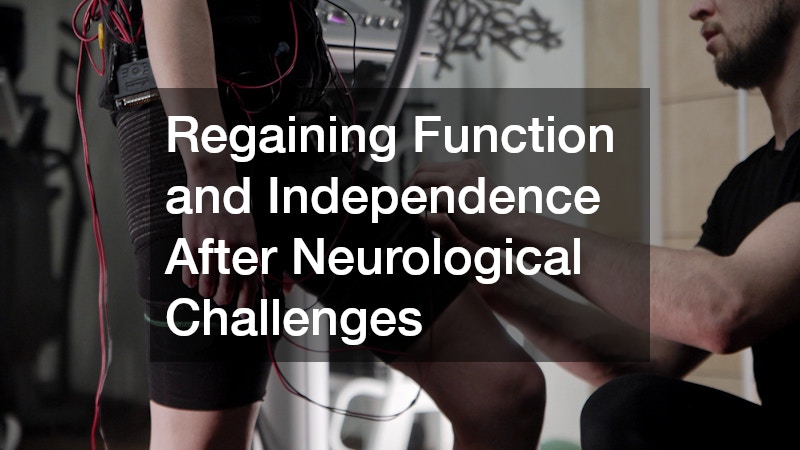Maintaining health and wellness is more important than ever. The journey to achieving well-being encompasses various dimensions, including physical health, mental balance, and emotional well-being. This article delves into comprehensive wellness steps that cater to diverse needs, from weight management to specialized care for ear, nose, and throat concerns. By exploring a range of modern and traditional therapies, we provide insights into how individuals can lead healthier and more fulfilling lives.
Whether you’re seeking to build confidence in the water, improve sleep and breathing, or find pain relief through chiropractic care, this guide provides targeted advice and encouragement. Additionally, we look into the restorative power of acupuncture treatments and neuro rehab for those overcoming neurological challenges. Emphasizing the role of personalized strategies for different life stages, from hormonal transitions to enhancing mobility, this comprehensive guide aims to serve as a beacon for those seeking lasting health. The information provided not only educates but also inspires action, motivating readers to embrace wellness steps integral to improving their overall quality of life.
Personalized Plans for Lasting Weight Management
Weight management is a critical aspect of overall health, and personalized plans are essential for sustainable results. Wellness steps for weight management include understanding one’s unique body composition, lifestyle factors, and dietary needs. By integrating medical weight loss treatment options, individuals can receive expert guidance tailored to their specific requirements, which enhances the effectiveness of their weight management efforts.
Medical weight loss treatment often involves a combination of dietary adjustments, exercise plans, and possible medications. These elements work synergistically to encourage safe and gradual weight loss, making them preferable over fad diets. Regular consultations with healthcare professionals can help monitor progress and make necessary adjustments to the plan, ensuring continued success.
Incorporating behavior modification strategies is another vital component of personalized weight management plans. These strategies focus on changing the habits that contribute to weight gain, such as emotional eating or sedentary lifestyles. By focusing on these steps, individuals are more likely to achieve and maintain their desired weight long-term, thereby enhancing their overall health and well-being.

Building Confidence and Safety in the Water
Learning to swim as an adult can be daunting, but it’s never too late to improve your water skills. Wellness steps for building confidence in the water include setting realistic goals, beginning with shallow waters, and gradually increasing difficulty. Adult swim lessons are structured to cater to diverse skill levels, focusing on both safety and skill development, providing a supportive environment for learners.
Adult swim lessons are designed to teach fundamental skills, such as floating, treading water, and basic strokes. These skills are crucial for personal safety and enhance physical fitness and cardiovascular health. These lessons promote a structured approach to learning, which helps overcome the common fear associated with deep waters.
By participating in swim lessons, individuals can reap a multitude of benefits beyond just safety. Swimming is known to relieve stress, improve flexibility, and strengthen muscles. Swimming encourages individuals to continue practicing regularly, thereby enhancing their overall physical and mental well-being.
Supporting Your Body’s Natural Cleansing Systems
Detoxification is one of the key processes by which the body eliminates toxins, and supporting this natural process is crucial for optimal health. Maintaining a balanced diet rich in antioxidants, staying hydrated, and exercising regularly play significant roles in promoting effective detoxification. The detox process can be further supported by incorporating practices such as periodic fasting or detox diets, which help reset the body’s systems.
The detox process involves multiple organs, including the liver, kidneys, and skin, all of which work together to eliminate waste products. These organs require adequate nutrients to perform efficiently; thus, wellness steps should include consuming foods rich in vitamins and minerals. Incorporating herbs and supplements known for their detoxifying properties is another strategy that aids the body’s natural cleansing systems.
In addition to dietary changes, lifestyle modifications are equally important in supporting detoxification. Reducing exposure to environmental toxins, such as pollutants and chemicals, is a proactive measure that complements dietary actions. Regular physical activity enhances detoxification by increasing circulation and promoting lymphatic drainage, which are essential for flushing out toxins.

Improving Sleep and Breathing for Better Health
Quality sleep and proper breathing are foundational for good health, and there are numerous steps individuals can take to enhance their rest. For those with sleep apnea or other sleep-related breathing disorders, a CPAP machine can be a life-changing tool. Ensuring the optimal function of this machine and understanding how it can aid in achieving restful sleep is essential for individuals using it.
A CPAP machine helps maintain an open airway during sleep, preventing the interruptions that characterize sleep apnea. Wellness steps include regular maintenance of the machine, such as cleaning its components and replacing filters as needed. This ensures the device is effective in enhancing sleep quality and overall health.
Developing a consistent bedtime routine also plays a crucial role in improving sleep and breathing. Maintaining a regular sleep schedule, reducing screen time before bed, and creating a relaxing sleep environment are simple yet effective strategies. By prioritizing sleep hygiene, individuals can enhance their overall well-being and reduce the risk of chronic health issues.
Realigning Your Body for Pain Relief and Mobility
Chiropractic treatment is a noninvasive technique used to address musculoskeletal issues. It can significantly improve pain levels and mobility. Actions that focus on maintaining spinal health and posture are beneficial in preventing these issues. Regular chiropractic adjustments can help realign the body, alleviate pain, and enhance physical function.
The primary goal of chiropractic adjustment is to correct misalignments in the spine that may be causing pain or dysfunction. This treatment can lead to improved mobility, reduced pain, and a greater range of motion. Wellness steps associated with chiropractic care also encourage individuals to engage in exercises and practices that support spinal health.
Besides addressing immediate pain concerns, chiropractic adjustments can play a preventive role in maintaining overall health. By incorporating complementary steps such as strength training, stretching, and ergonomic corrections, individuals can sustain the benefits of chiropractic care long-term. This holistic approach helps in maintaining a balanced and pain-free body.

Regaining Function and Independence After Neurological Challenges
Neurological rehabilitation, or neuro rehab, is an essential process for individuals recovering from neurological conditions or injuries. Wellness steps in neuro rehab focus on physical therapies, cognitive exercises, and patient education to restore function and independence. This multidisciplinary approach is tailored to the needs of the individual, ensuring a comprehensive path to recovery.
Neuro rehab often incorporates various therapies, including occupational therapy, physical therapy, and speech therapy, to address the wide-ranging impacts of neurological impairments. These therapies work together to improve the patient’s motor skills, communication abilities, and daily function. Neuro rehab often emphasizes the importance of patient and family involvement in the recovery process.
The journey to regaining independence after a neurological challenge is multifaceted and requires dedication from both patients and caregivers. Patients can achieve significant improvements through consistent application of the steps prescribed in neuro rehab programs. Emotional and psychological support is also critical, as it provides motivation and encouragement during the rehabilitation journey.
Therapies That Help Restore Strength and Mobility
Rehabilitation therapies are indispensable for individuals looking to regain strength and mobility following an injury or surgery. Various steps are involved in these therapies, emphasizing the need for tailored treatments that address specific deficits. Rehabilitation therapies may include physiotherapy, occupational therapy, and other interventions designed to restore function and enhance quality of life.
Physiotherapy is a core component of rehabilitation that focuses on improving movement, reducing pain, and preventing further injury. Wellness steps in physiotherapy may involve exercises, manual therapy, and modalities such as ultrasound or electrical stimulation. These practices contribute to restoring strength and flexibility, which are necessary for daily activities.
Another critical aspect of rehabilitation therapies is occupational therapy, which aims to help patients achieve independence in their daily lives. Occupational therapists assess the individual’s environment and recommend actions for modifying behavior and home settings to improve safety and accessibility. This holistic approach ensures that rehabilitation extends beyond the treatment room into every aspect of a patient’s life.

Ancient Techniques for Pain Relief and Overall Balance
Acupuncture treatments are an ancient practice that remains relevant today because they’re effective in managing pain and promoting overall balance. The typical steps associated with acupuncture include identifying targeted areas for treatment and combining acupuncture with modern therapies for optimal results. This holistic approach brings a natural alternative to pain management, reducing reliance on pharmaceuticals.
Acupuncture involves inserting fine needles into specific points on the body to stimulate an energy flow, known as Qi. The effectiveness of acupuncture is enhanced by ensuring that individuals are well-informed about the process and its mindful applications. Combining acupuncture with other modalities can often amplify its benefits.
Acupuncture treatments not only assist in pain relief but also contribute to mental and emotional balance. Many individuals experience reduced stress, anxiety, and an improved sense of well-being as part of the wellness steps linked to acupuncture. As an integrative component of a comprehensive health and wellness plan, acupuncture can provide sustainable relief for a variety of conditions.
Specialized Care for Common ENT Concerns
Ear, nose, and throat (ENT) health is a vital component of overall wellness, and specialized care is often necessary to address common ailments in these areas. Wellness steps for ENT care include regular check-ups with trained ear nose throat doctors, who can diagnose and manage conditions promptly. Proactive management of ENT health can lead to better breathing, sleep, and overall quality of life.
ENT doctors are equipped to handle a variety of conditions, from sinus infections to hearing loss, through both medical and surgical interventions. Steps involve an individualized approach to treatment, ensuring that patients receive care tailored to their specific symptoms and medical history. Early intervention by ENT specialists can prevent complications and promote long-term health.
In addition to medical treatments, lifestyle modifications are also crucial for maintaining ENT health. Proper hydration, smoking avoidance, and allergy management are simple actions that can mitigate ENT problems. By adopting these practices, along with regular consultations, individuals can maintain better ENT health and consequently improve their overall well-being.
Supporting Hormonal Health and Life Stage Transitions
Hormonal health significantly impacts various life stages, from puberty to menopause, making it essential to manage these transitions carefully. Wellness actions for supporting hormonal health include balanced nutrition, exercise, and stress management. Menopause and hormone therapy can play a vital role in easing the transition for women experiencing menopausal symptoms.
Menopause can present numerous challenges, including mood swings, hot flashes, and fatigue. Hormone therapy can help alleviate these symptoms by balancing hormone levels, offering significant relief. Wellness steps around menopause focus on lifestyle adjustments and holistic approaches that complement hormone therapy, promoting smoother transitions.
Beyond menopause, maintaining hormonal balance is key to preventing chronic conditions such as osteoporosis and cardiovascular disease. Regular health screenings, staying active, and consuming a diet rich in phytoestrogens and other beneficial nutrients ensure that hormonal health is supported through diverse life stages, promoting long-term wellness.
The journey to wellness is multifaceted, involving personalized care and proactive management across various aspects of health. This extensive guide offers insights into essential actions that can empower individuals to take charge of their health. By exploring diverse therapies and treatments, such as medical weight loss and acupuncture, individuals can build a well-rounded approach to their health needs. Each segment of this article reveals the importance of integrating modern medicine with traditional practices, providing a comprehensive strategy for addressing unique health challenges.
Many of the issues discussed, such as pain management, sleep improvement with CPAP technology, and maintaining hormonal balance, emphasize the critical role of ongoing care and the importance of regular consultations with healthcare providers. Additionally, lifestyle modifications, whether in the form of detox processes or rehabilitation therapies, are a testament to the power of adopting holistic wellness steps. These steps are designed to foster physical, mental, and emotional health for enhanced quality of life.
Ultimately, the full spectrum of wellness practices presented encourages a balanced life. Adopting these strategies and remaining committed to health goals can lead to lasting changes. By prioritizing personalized health plans and embracing both innovative and time-proven techniques, individuals can ensure their journey to wellness is both effective and rewarding.



